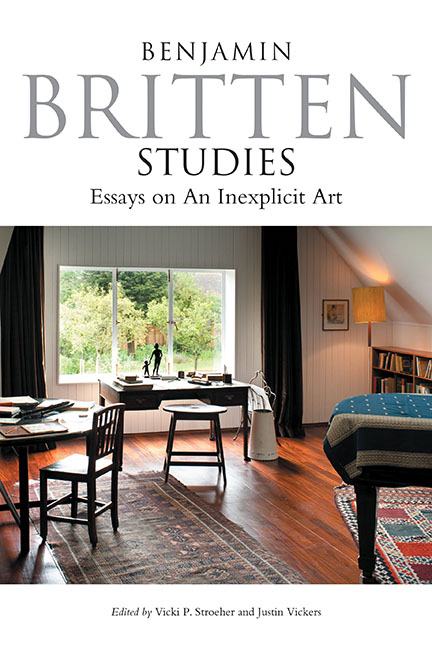Book contents
- Frontmatter
- Dedication
- Epigraph
- Contents
- List of Illustrations
- List of Musical Examples
- List of Tables
- Notes on Contributors
- Acknowledgements
- Bibliographic and General Abbreviations
- Editors’ Preface
- Introduction: Writing About Britten
- Part I Identity: Exile and Return
- 1 The Shock of Exile: Britten and the American Years
- 2 Britten, Paul Bunyan, and “American-ness”
- 3 Collaborating with Corwin, CBS, and the BBC: Britten's Re-entry into British Radio in 1942
- 4 An Empire Built on Shingle: Britten, the English Opera Group, and the Aldeburgh Festival
- Part II Britten and Intimacy
- Part III Britten and His Craft
- Part IV Britten and Matters of Practicality
- Conclusion and Epilogue
- Works Cited
- Index
4 - An Empire Built on Shingle: Britten, the English Opera Group, and the Aldeburgh Festival
from Part I - Identity: Exile and Return
Published online by Cambridge University Press: 25 October 2017
- Frontmatter
- Dedication
- Epigraph
- Contents
- List of Illustrations
- List of Musical Examples
- List of Tables
- Notes on Contributors
- Acknowledgements
- Bibliographic and General Abbreviations
- Editors’ Preface
- Introduction: Writing About Britten
- Part I Identity: Exile and Return
- 1 The Shock of Exile: Britten and the American Years
- 2 Britten, Paul Bunyan, and “American-ness”
- 3 Collaborating with Corwin, CBS, and the BBC: Britten's Re-entry into British Radio in 1942
- 4 An Empire Built on Shingle: Britten, the English Opera Group, and the Aldeburgh Festival
- Part II Britten and Intimacy
- Part III Britten and His Craft
- Part IV Britten and Matters of Practicality
- Conclusion and Epilogue
- Works Cited
- Index
Summary
Tradition has it that nothing in England is ever started in anything like its finished form; things are supposed to happen by degrees.
The Earl of HarewoodBritten's post-war years began an interval in which his energies were almost exclusively focused on building both an empire and the environs in which a living and vital musical establishment could flourish outside London. During the ten years immediately following Peter Grimes Britten not only composed seven of his nine full-scale operas, he also devoted himself to the founding of both the English Opera Group (EOG, 1946–47) and the Aldeburgh Festival of Music and the Arts (AFMA, 1947–48). The latter endeavors were intimately bound up in notions of English identity: the EOG had as its purpose the fostering of a native opera tradition; the Aldeburgh Festival was meant to be a quintessentially English – if not specifically East Anglian – experience, thanks in no small part to its rootedness in the Suffolk coast and the iconic shingle that framed its eastern border.
Narratives of the founding of these two entities abound in Britten scholarship, but tend to treat them either in isolation or as different but compatible. Although a recounting of the EOG's history is not complicated, its internal wranglings bear a complexity of great proportions; these are assessed at length in the biographies by Carpenter and Kildea. Likewise, the founding of the Aldeburgh Festival – if less controversial – has received its due diligence. That which has not been considered, however, is how inextricable and affined these two undertakings were. This chapter examines how the English Opera Group's founding was thoroughly enmeshed with the imminent establishment of the Aldeburgh Festival of Music and the Arts. Although the EOG focused its efforts on Britten, the repertoire selections of the Aldeburgh Festival far eclipsed those of a perceived Britten-only event. In particular, the programming of the first decade of the EOG, when viewed parallel to that of the Aldeburgh Festival, reveals the extraordinary diversity and range of the Festival as weighed against the strictly narrow scope of the programming of the EOG (see Tables 4.2 and 4.3).
- Type
- Chapter
- Information
- Benjamin Britten Studies: Essays on An Inexplicit Art , pp. 89 - 176Publisher: Boydell & BrewerPrint publication year: 2017

